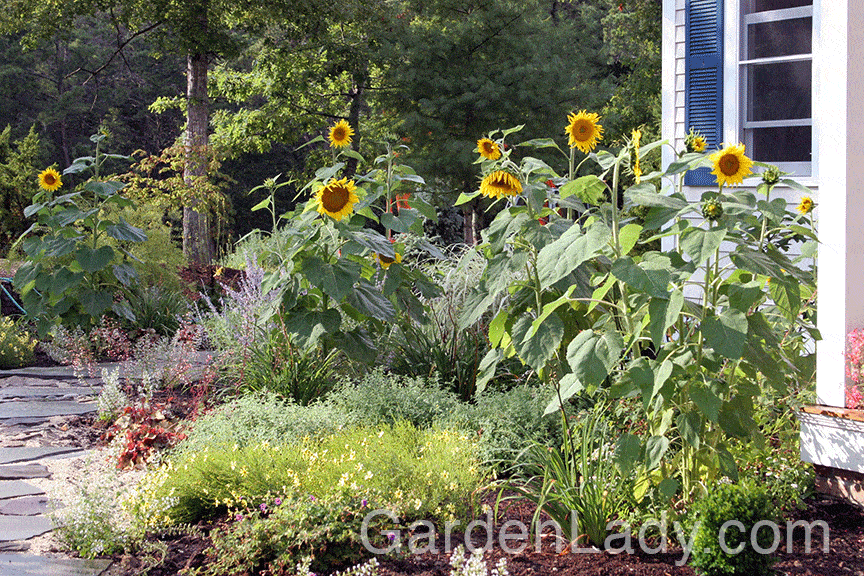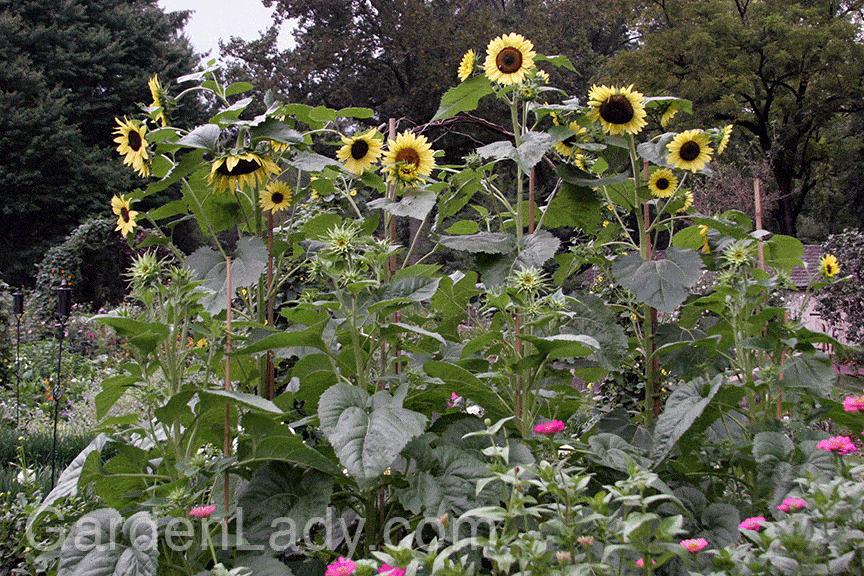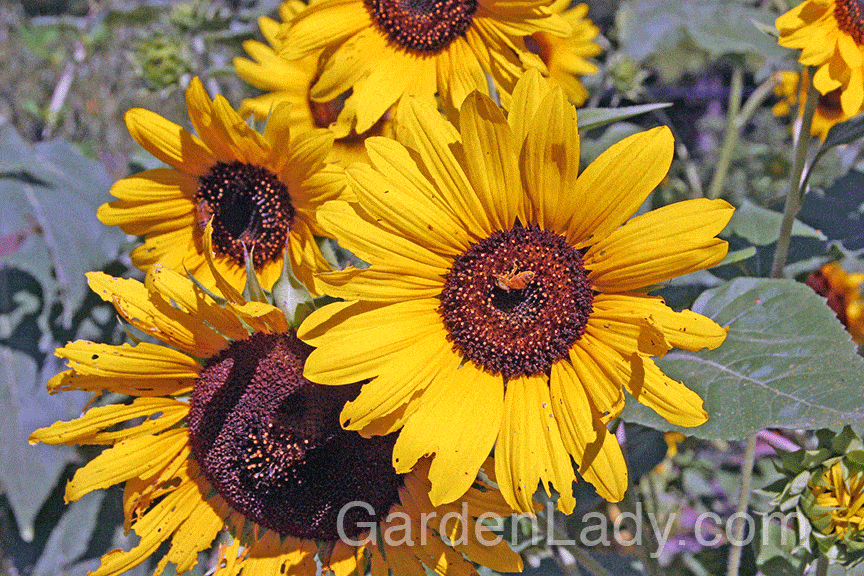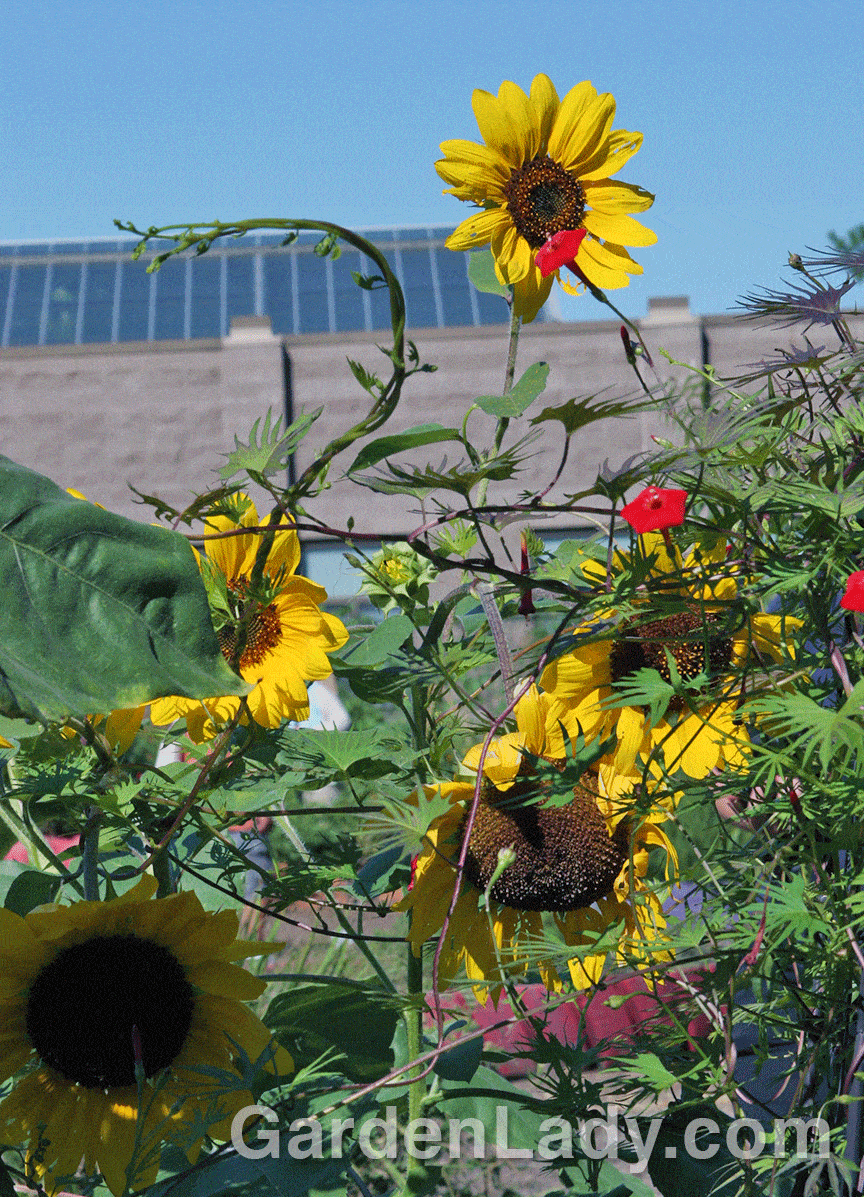Imagine:
When I first moved to Poison Ivy Acres the front entry to the house was a lawn. That’s all, just a lawn. I knew I wanted a flower garden to be the first “room” that someone entered when coming to our house, so the lawn was immediately tilled and planted with assorted shrubs and perennials.
Like most first year gardens, it was sparse and a tad pathetic. So imagine my surprise when I noticed in early summer that some large plants were growing in my new garden, spontaneously filling spaces and adding color. By August, I had a garden filled with big, dramatic and cheerful plants that I hadn’t placed there. My sparely planted flowerbed was filled with sunflowers that were planted by the blue jays.
The next time you notice that the blue jays are scooping up your sunflower seed as if they are gluttons from hell, step back and remember that they aren’t being greedy, but generous. Jays bury the excess seed that they take, and this might go on to grow and feed future birds, be they blue jays or other species.
For me, the common sunflower will always be a symbol of generosity, abundance and surprising growth.

Here is my first-year entry garden in August …looking far more filled and happy because of the sunflowers planted by the blue jays.
Name: Helianthus annuus, aka the common sunflower
Type of Plant: An annual grown for flowers and seeds. This plant is best started from seeds placed directly in the ground in sunny places. There are sunflowers that grow 10 feet tall and those that stay under 3 feet. There are varieties that produce one large head and others that branch out and make many flowers. Choose the type that best suits you and your garden.
Why I love this: These plants are easy to grow and make everyone smile. Everything else – cut flowers, bird food, snacks – is just gravy.
Sunflowers make good “vigilante” plantings…sneak them into your neighbor’s yard, your mother’s garden or a public flowerbed. Poke them around the outside of your vegetable plot. Put them around schools, in traffic islands and town squares. This is the plant most suited to “random acts of gardening.”
A Word to the Wise: When you plant any seed in the ground, pat the area gently to make sure the seed makes good contact with the soil. Then water the area well and keep it moist while the seed is germinating and the plant is getting established. As the young plant grows, water more deeply less often.

Sunflowers are perfect in cutting gardens. They can be home-grown bird feeders as well…just leave them in the garden as the flowers go by and the birds will help themselves to the seeds.

When you grow sunflowers you are providing a dance floor for the bees. Sit back and enjoy the show.

Because sunflowers have heavy, strong stalks they make good supports for light-weight annual vines. This cardinal climber vine scrambles up the sunflowers so that hummingbirds are as drawn to the garden as the bees and seed-feeders are.

0 Comments